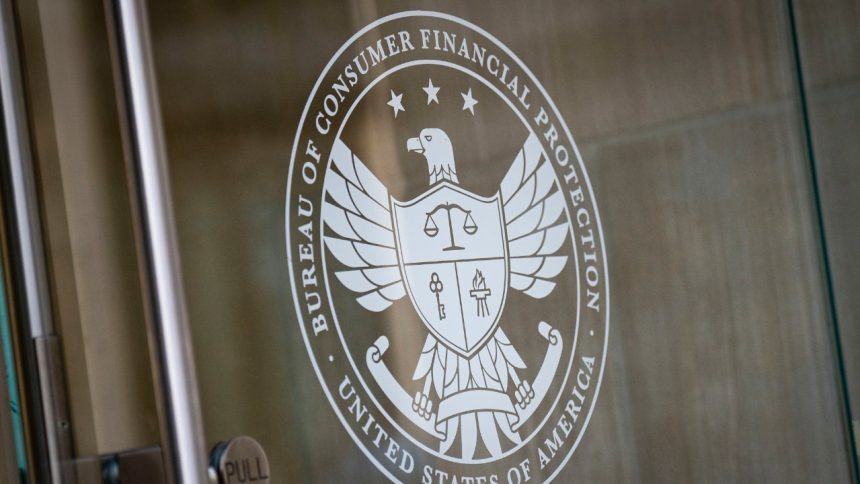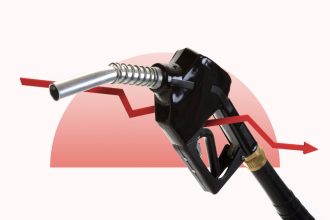Key takeaways
- Experts debate the impact of a diminished CFPB, with some saying the responsibility of consumer financial protection could shift to state governments.
- Some consumer credit protections, such as medical debt reporting and buy now, pay later (BNPL) safety nets, may be scaled back or eliminated with new CFPB leadership.
When a federal agency expressly named to protect the finances of consumers is shut down, even if temporarily, it’s natural to sound the alarm. The National Consumer Law Center (NCLC) did exactly that.
“The gravity of the attack cannot be overstated, endangering the entire economy…” read a Feb. 10 mass email from NCLC Executive Director Rich Dubois.
Yes, it’s hard to argue: The Consumer Financial Protection Bureau (CFPB), established in the rubble of the Great Recession, is under attack. Elon Musk, who recently held court in the Oval Office alongside President Trump, called to “delete” the agency, ominously posting “CFPB RIP” on X. And on Feb. 10, acting CFPB Director Russell Vought told employees to halt all “work tasks.”
Whether the agency’s in-limbo status is worth ringing alarms is, perhaps surprisingly, up for debate.
“While the actions do seem drastic, it was based on the leadership of the agency trying to drive the prior [administration’s] agenda,” says Kristen E. Larson, a veteran consumer financial attorney who advises banks. “This was the only way to stop it.”
What to know about the battle over the CFPB
The CFPB is unlikely to completely shutter, considering the Supreme Court upheld its funding source last May. Also, the Trump Administration said in a Feb. 24 court filing that it aimed to “streamline,” not close the agency. It even thrust Director-nominee Jonathan McKernan before a key Senate committee on Feb. 27.
Despite the agency’s record — including fining Wells Fargo $3.7 billion and banning infamous Navient from federal student loan servicing — not everyone sees its potential disappearing act as draconian.
Larson and other financial services attorneys at Ballard Spahr — which run a blog and podcast, in part, covering the CFPB — are among the less concerned. No, they don’t think we’ll re-enter a pre-Dodd-Frank Act world of financial institutions policing themselves. Instead, they say, the responsibility would largely shift to state governments.
Senior counselor Alan S. Kaplinsky, a colleague of Larson’s, says he expects “blue states” — those with Democratic governors and attorneys general — to be more active in consumer protection than “red states.” Twenty-three states, not all of them reliably “blue,” already filed suit in late February challenging the CFPB’s work stoppage.
Kaplinsky adds, “What consumers need is the same thing industry needs, [the CFPB] being independent of politics yet being subject to oversight by Congress so that we won’t have these radical shifts every time we have a new person in [the White House].”
Talking points: What experts say in the CFPB fight
| Point | Counterpoint |
|---|---|
| Some state consumer protection laws go beyond the breadth of federal statutes. | Not all states protect their residents as well as others. |
| Other agencies — namely the Office of the Comptroller of the Currency, Federal Deposit Insurance Corporation and the Federal Reserve — remain in place as less politicized bodies that can carry the mantle for the CFPB. | The CFPB was designed as the one, truly independent watchdog (since it doesn’t receive funding directly from Congress). |
| Financial institutions operating nationally often create products adhering to the consumer protection laws of the most strict states. | That may leave the door open for predatory lenders to operate locally or regionally in states with weaker consumer protection. |
Longer-term what-ifs aside, the NCLC, among others, are concerned about what a diluted and denuded CFPB would mean for the average consumer in any state.
It “now appears poised to roll over and play dead in pending lawsuits by big banks and credit bureaus, letting them overturn new [CFPB-issued] rules returning $5 billion in excessive overdraft fees to struggling families and removing medical debt from credit reports,” said Lauren Saunders, the NCLC’s associate director in prepared remarks.
On Feb. 21, for example, the CFPB sought to dismiss its own case against peer-to-peer lender SoLo Funds. Under the former administration, the agency sued, in part, over the SoLo’s one-time “tipping” structure that confused the real cost of loans.
Expert insight
“The CPFB was created after excessive risk-taking by financial companies, many of whom were not supervised by a federal regulator, crashed our economy. Millions of people lost their homes, work, savings, and businesses. It was created to protect people, not empower Elon Musk. If this administration chooses to cover its eyes from the facts, people will be put in harm’s way. This is a free pass for financial institutions to take advantage of consumers.”
– Adam Rust, director of financial services for the Consumer Federation of America in a press release
3 consumer credit protections to monitor in the CFPB’s wake
1. Medical debt falling off credit reports
The CFPB finalized a rule in early January to bar creditors and credit reporting agencies from evaluating consumers’ medical debt. If it proceeds, an estimated 15 million Americans would see $49 billion in medical bills fall off their credit reports — their credit scores would jump by an average of 20 points.
What happens now: The rule has faced court challenges and is in the midst of a 90-day pause, delaying its potential effective date to June 15. It’s seemingly unlikely that the new CFPB leadership will defend the rule in court — and even if it does, the Congressional Review Act allows lawmakers to sink it.
Learn more: What the CFPB rules would entail
2. Capped credit card interest rates
The CFPB is prohibited by law from regulating interest rates, but President Trump may find other means of fulfilling his campaign promise to put a 10 percent ceiling on credit card APRs. The current average eclipses 20 percent, according to Bankrate. Sens. Bernie Sanders (I-Vt.) and Josh Hawley (R-Mo.) introduced a bill on Feb. 4 that would see Congress pave the way.
What happens now: The courts previously foiled the CFPB’s 2024 efforts at capping credit card late fees. This time around, it may be the influence of the banking industry that stands in the way of advancing widely popular credit card protection. Larson and colleagues represent banks’ view that capping rates would disincentivize issuers from offering robust rewards programs to well-qualified borrowers — and from offering credit to less creditworthy applicants.
Learn more: Can Trump limit credit card rates?
3. Buy now, pay later users receiving a credit card-like safety net
Last May, the CFPB issued an interpretative rule likening BNPL to credit cards in the Truth in Lending Act. Specifically, it allows consumers to file (and have resolved) disputes, be eligible for refunds and receive recurring billing statements.
What happens now: The rule could be perceived as an overreach by the new CFPB leadership and simply be voided, as Politico reported.
Learn more: 3 worrisome trends of buy now, pay later
Read the full article here














